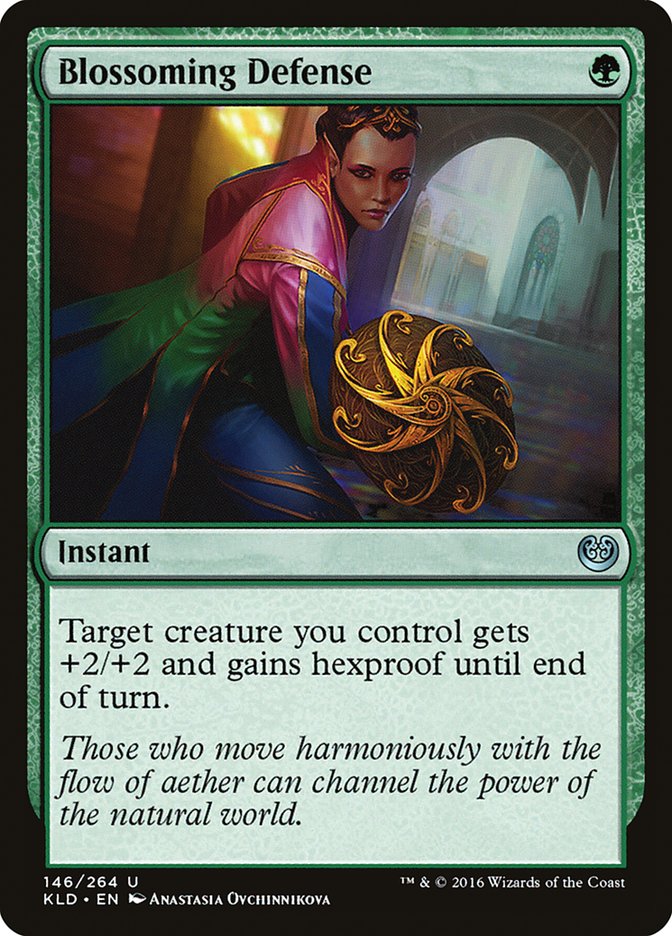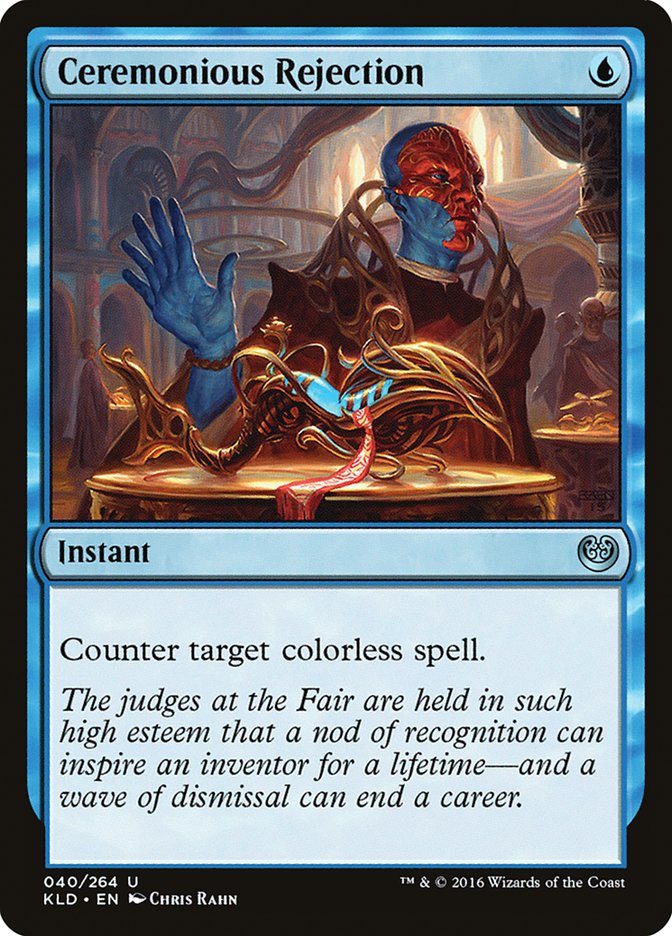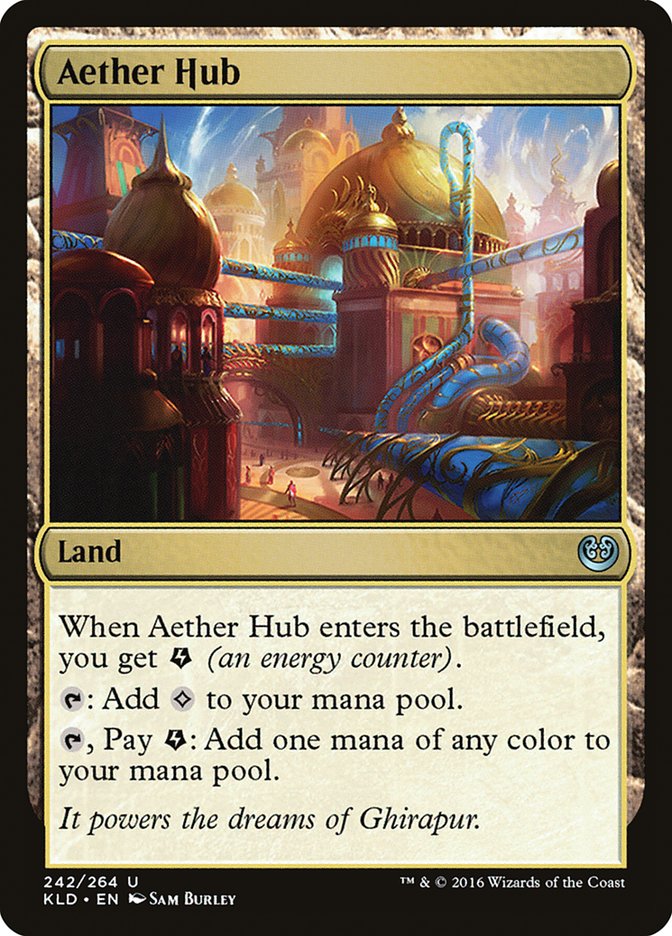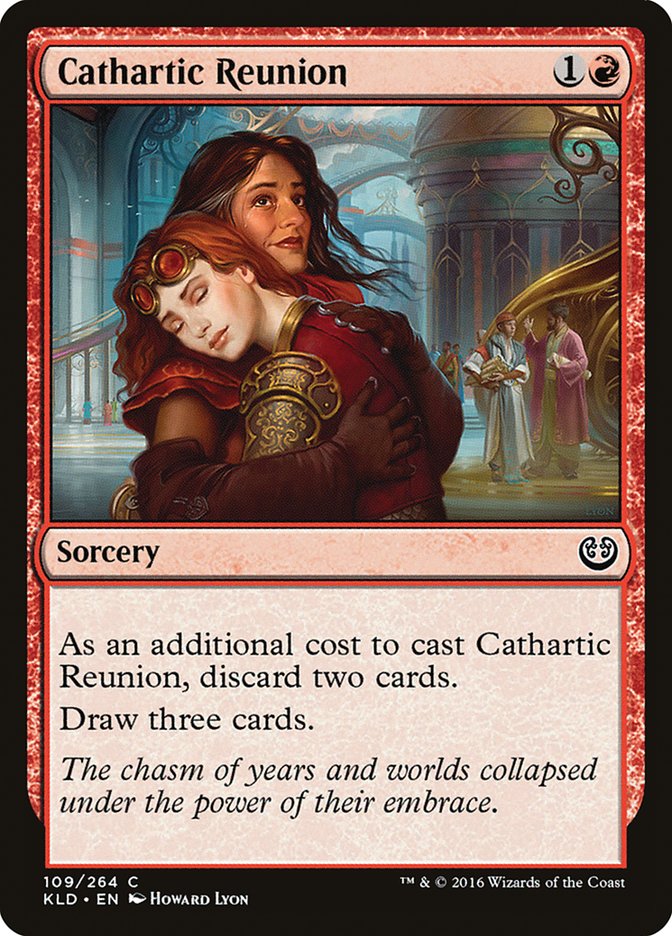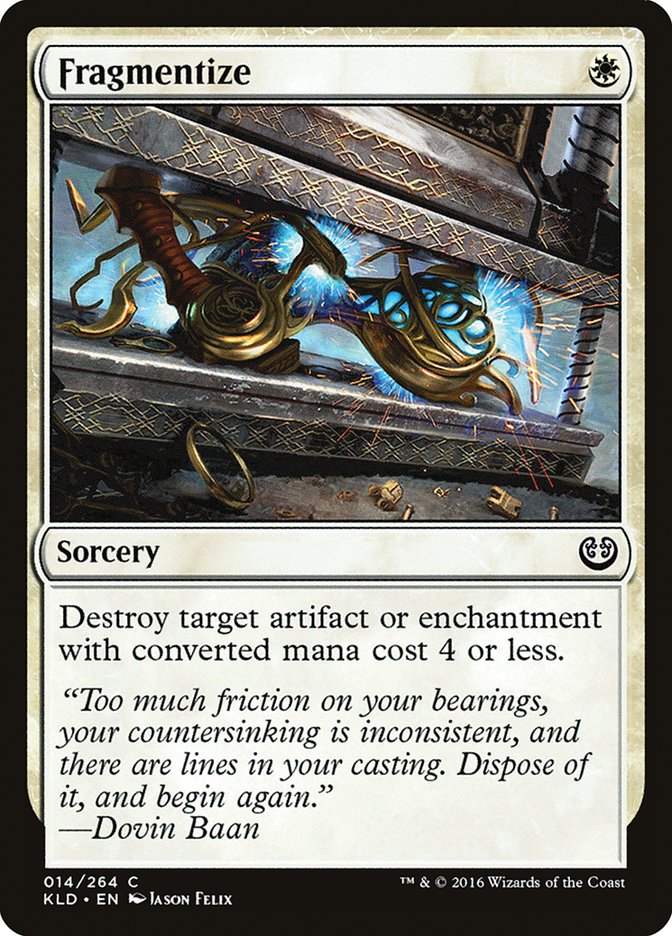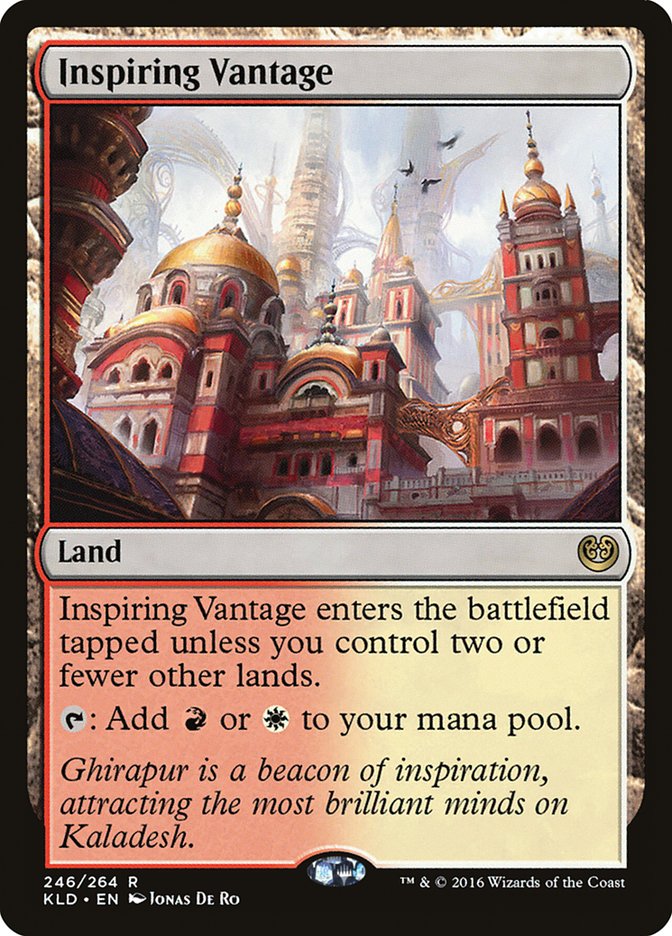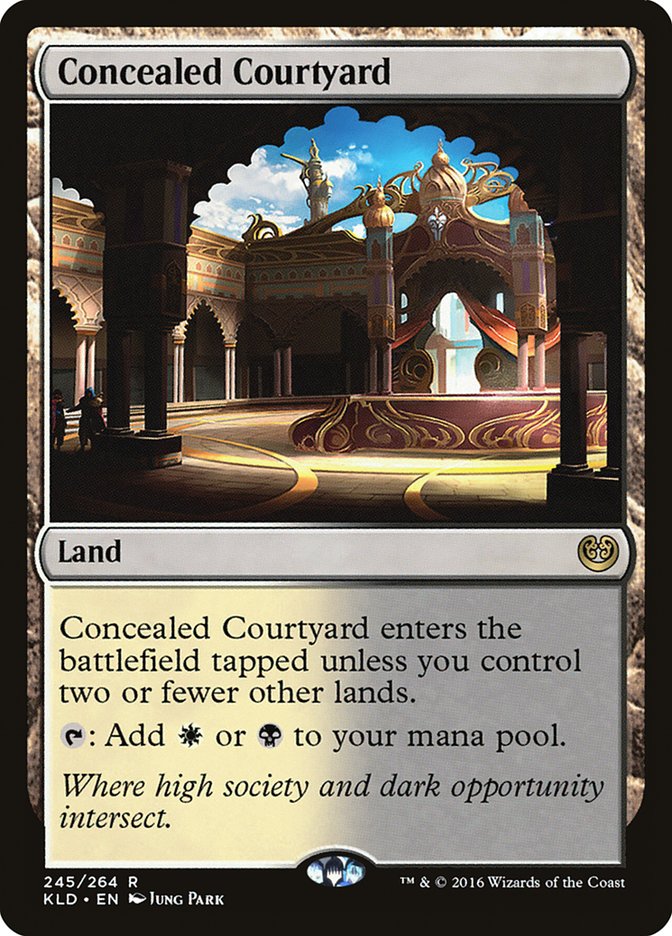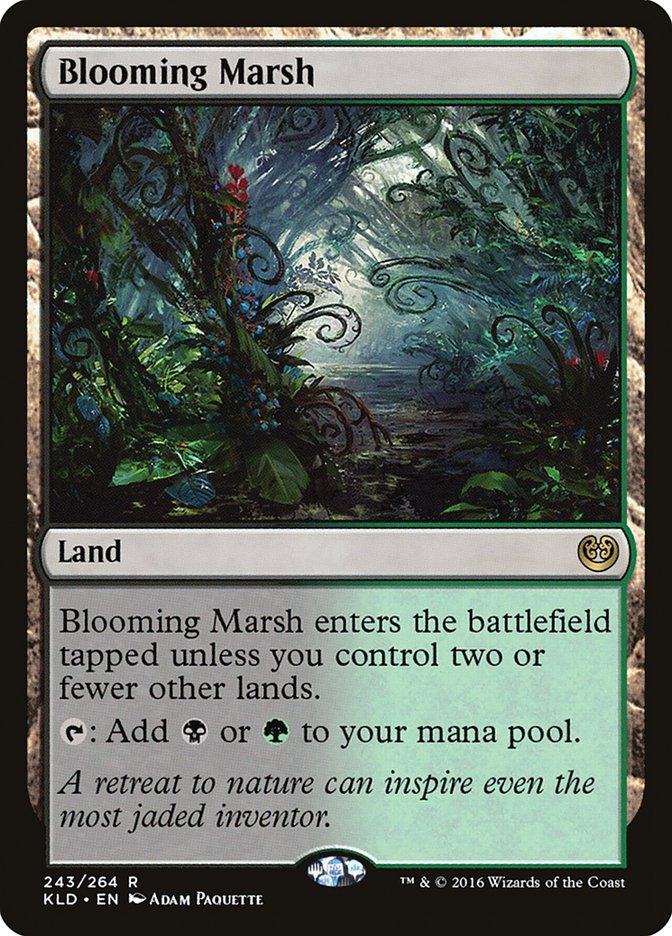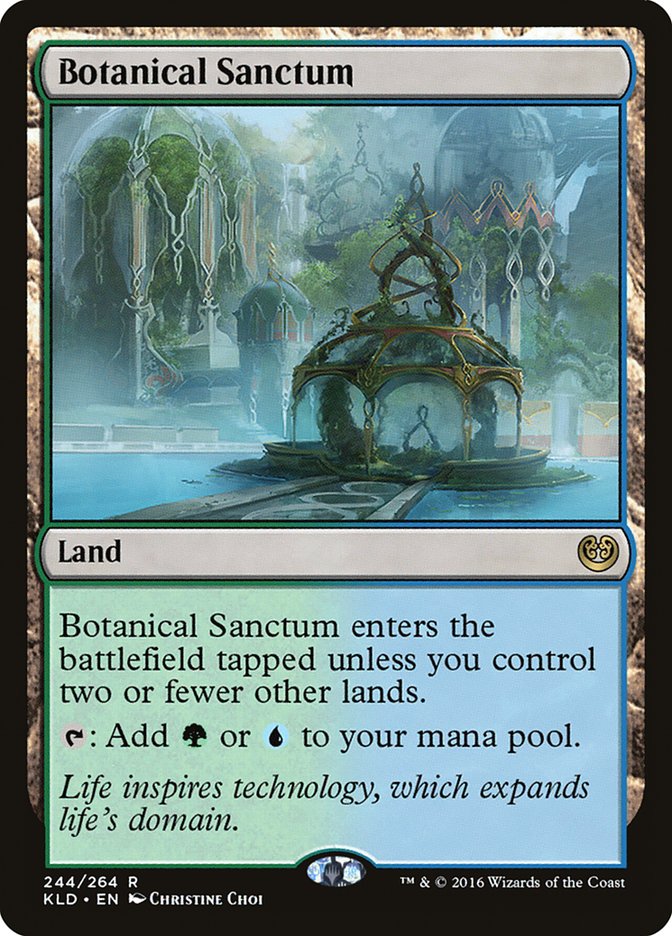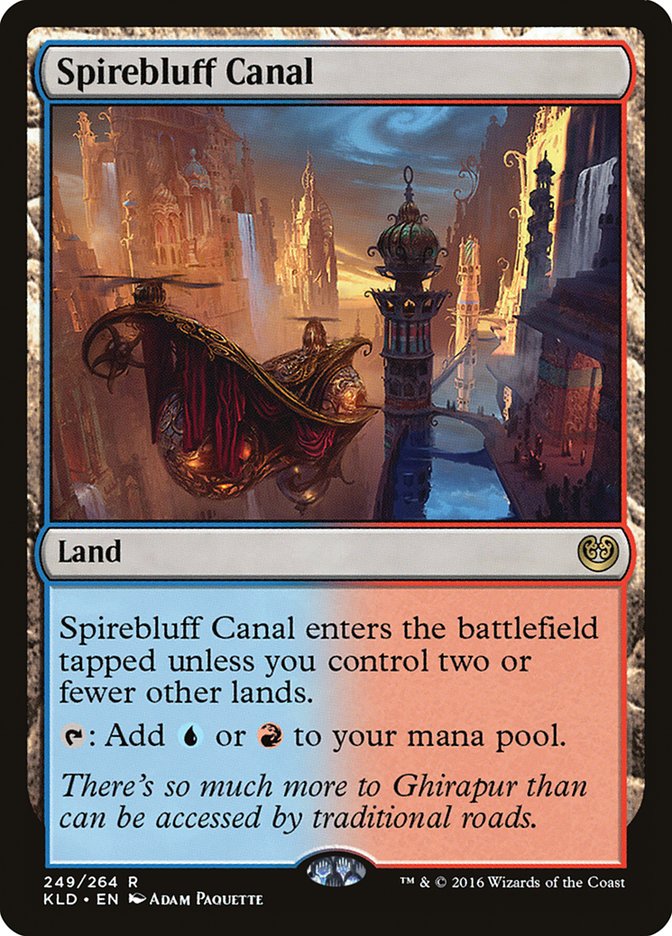“Look at this new brew for future Kaladesh Standard!”
“Here are the premier strategies for Kaladesh Limited!”
“Porting old Standard decks past rotation!”
Every few months, when the time comes from a brand-new block of Standard, the Internet is filled with odds and ends about how to build a deck out of almost entirely new cards. That can mean what to build in Standard, how to win the upcoming Prerelease, or even just upgrades to the set’s new Intro Decks.
This almost formulaic approach to writing articles each quarter results in many Modern players being left without very much content to read or watch for weeks at a time. Sure, there may be a sweet new deck around the Vehicles of Kaladesh, but if Aether Vial, Lightning Bolt, and Inquisition of Kozilek are at the top of your Magic priorities, who cares about the new Vehicle decks?
Despite Kaladesh being such a powerful set, there is very little online on what cards from Chandra Nalaar’s home plane are actually going to see play in Wizards of the Coast’s most beloved Modern format.
Blossoming Defense is a great addition to Infect by efficiently doing two things in the same card that normally require multiple cards to accomplish.
Creatures (12)
Lands (20)
Spells (28)

This particular decklist is primarily a port from friend and teammate Brad Carpenter’s recent win in Orlando but has a reasonable bit of theory in the changes that led to Blossoming Defense’s inclusion.
The reason that the spell is so good is that it is able to pull the double-duty of being a pump spell as well as a protection spell against the cards that can kill creatures. This doesn’t even bring up the fact that, unlike Vines of Vastwood, Blossoming Defense can grow creatures out of Pyroclasm and Orzhov Pontiff range for a single mana.
The Infect archetype as of late has been forced to adapt to playing a different game from when it was first introduced into Modern. When Infect was the new kid on the block, it was much easier to “just get them” by playing a pile of pump spells and beating people were trying too hard to answer Splinter Twin and Birthing Pod strategies. Since that time, Infect has moved to a more reactive strategy, electing to play more copies of Spell Pierce, Apostle’s Blessing, and even maindeck copies of Dispel from time to time.
Blossoming Defense gives the deck a “best of both worlds” feel that is closer to a compromise than an actual modal spell or spell that plays both roles. To elaborate a bit, Infect decks couldn’t quite afford to play Avoid Fate or another spell that more-or-less provided exclusively hexproof; it wasn’t effective enough at actually being proactive when the time came to turn the corner or actually attempt to close the door on the opponent.
On the other side of the coin, the only pump spells that Infect would actually play in the deck are the most mana-efficient spells in all of Modern; Giant Growth has never been good enough, and Rancor is likely the smallest “pump” that has even seen anything close to tenured play in the Infect archetype.
While Blossoming Defense isn’t as good as Groundswell at growing a creature or Apostle’s Blessing at providing protection, doing a little bit of both for a single mana is something that a deck as efficient as Infect will be able to utilize quite well.
I’ve said it once, and I’ll say it again: Ceremonious Rejection will find its way into every Eternal format. Any low-to-the-ground blue decks that want to shore up their Tron, Lantern Control, and Affinity matchups will make room in their 75 for such an aggressively-costed answer to so many powerful cards.
Aether Hub is going to fill a very specific role in a handful of unfair decks that need very good mana of many different colors. Last year’s Amulet Bloom deck made use of Tendo Ice Bridge and Aether Hub is a strict upgrade of that card for a plethora of reasons:
1. If one of the Ravnica bouncelands (like Simic Growth Chamber) returns Aether Hub to its owner’s hand before it is used for colored mana, the Hub will be able to produce colored mana multiple times when it comes back down; the Ice Bridge would’ve only had the single use with its ice counter.
2. In a deck with multiple copies of Aether Hub, any Aether Hubs that are destroyed before producing colored mana will benefit later copies of Aether Hub that show up. Land destruction being a common avenue that decks take against Amulet of Vigor strategies in post-sideboard games makes this a real concern.
These points don’t even take in account the possibilities associated with other cards that produce and use Energy. Many cards that use Energy from Kaladesh are on the cusp of playability as is, and it’s likely that Aether Hub slots right into these decks by merit of being a land that produces free Energy.
Dredge is already making pretty reasonable headway in Modern right now, and this may very well push it over the top. With Insolent Neonate and Prized Amalgam providing the deck with new toys to play to the deck’s already odd strengths, Cathartic Reunion is a strict upgrade to the already-justifiable Tormenting Voice.
Creatures (25)
- 4 Golgari Grave-Troll
- 4 Stinkweed Imp
- 4 Narcomoeba
- 4 Bloodghast
- 4 Prized Amalgam
- 4 Insolent Neonate
- 1 Haunted Dead
Lands (20)
Spells (15)

Cathartic Reunion is a near-strict upgrade from Tormenting Voice in all of the areas that this deck cares about. Discarding more cards up front equates to having more ways to guarantee that multiple Dredge enablers will be in the graveyard when the time comes to start drawing cards. Drawing more cards with Cathartic Reunion is exactly what it sounds like: drawing more cards. There isn’t too much to explain when it comes to drawing more cards or fewer cards, particularly in a deck that cares almost exclusively about the number of times that a single card is drawn (with little to no regard for how many cards actually end up in-hand after the cards themselves are drawn or replaced by a Dredge).
This is a card that is in a similar boat as Ceremonious Rejection without being on the same power level. A good number of green decks have begun adopting Natural State in place of Nature’s Claim to sacrifice versatility in order to have a lower cost associated with the spell. Fragmentize being able to destroy Leylines and other spells that cost exactly four could end up being a fine tradeoff for the downgrade to sorcery speed.
Despite not being as sure-fire as some of the other cards in the set, Fragmentize is definitely something to keep on your radar going into post-Kaladesh Modern, particularly in fair, aggressive white decks.
Smuggler’s Copter is better than Steel Overseer in specific Modern metagames.
Today’s Modern is dominated by piles of decks trying to solitaire one another. The answers of the format aren’t remotely on the same level of the threats and it makes it hopeless for fair and grindy decks to compete. Jund is barely hanging on as a realistic option, barely touting the “fair” flag for Modern decks right now.
If Modern even reaches a point where resiliency means more than creating as much damage as possible (in the smallest window), it’s realistic to try to use Memnite or Arcbound Ravager to Crew a Smuggler’s Copter. These creatures tend to get stranded on the ground due to their lack of evasion, and the Copter provides a sort of pseudo-evasion to creatures that were previously useless (in combat).
Affinity being a deck that is so entrenched in a “sum-of-its-parts” mindset means that the card selection (and the efficiency of the creature) plays very well to Affinity’s strengths.
Creatures (24)
Lands (17)
Spells (19)

In this particular variant of Affinity there are more cards that contribute to finding specifically Cranial Plating, Arcbound Ravager, and Etched Champion. In this hypothetical Modern format, this variant of Affinity will have significantly “better” sideboard cards than classic Affinity variants due to the deck’s ability to dig a bit deeper than the typical aggressive deck; Affinity having so many cards that don’t translate well into the late-game (looking at you, extra copies of Mox Opal) is an added “bonus” to the services that Smuggler’s Copter brings to the table.
When these lands were spoiled, the Internet went wild. “Modern will never be the same! This will change every single deck’s manabase! Burn is dead!” Many people aren’t being reasonable when trying to understand what different manabases do for their respective decks.
Botanical Garden slotting into Infect is the first example of a pretty simple misunderstanding that people seem to be having. Infect is a deck that places a high value on its fetchlands. Botanical Garden may be painless (and usually perfect) mana, but it is never going to produce a 1/1 creature at instant speed (with a little help from Dryad Arbor), nor is it going to fuel the graveyard for Become Immense to be cast as early as the second turn.
Inspiring Vantage is in a similar spot in Modern Burn decks. It is unlikely that a Naya Burn deck is going to find room for eight total copies of Inspiring Vantage and Copperline Gorge. Wild Nacatl needs specifically Plains and Mountains to be on the battlefield to be a reasonable Magic card, and Inspiring Vantage being neither of those land types (nor casting Nacatl) is likely not going to be good enough.
In a given game, Burn is required to function off of two or three lands, and Inspiring Vantage means that Burn would then have to fetch a copy of Stomping Ground to round out all of its colors. From this point a Wild Nacatl would only be a 2/2, and in a format as fast-paced as Modern, that just isn’t a proper power level to try to compete with other decks.
Outside of these interactions or strategies that call for these percentage points that come from deck-thinning, there are decks that are going to benefit from the upgraded mana; B/W Tokens is going to find room for Concealed Courtyard, Inquisition of Kozilek decks are going to find use for Blooming Marsh, and Spirebluff Canal is going to show up in the U/R Delver of Secrets / Bedlam Reveler decks.
Wrapping It Up
From the perspective of someone who prefers Eternal formats to rotating ones (Standard has been pretty great the last year or so, but it is admittedly not my favorite thing to play), a majority of new sets tend toward exploring possibilities of newly printed cards and seeing how those cards can be applied to what may already work. Sometimes the best way to analyze a new card is to see if it is strictly better at doing something that another card does.
Sometimes it isn’t always a literal translation from one card to another, or it can even take a deck in a different direction from before. Trying out new cards is one of the best parts of Magic, and locking into an Eternal format doesn’t always have to mean that zero cards in your deck change each set; it just means that you have to work that much harder to find cards that fit your needs. Never settle and never stop searching for ways to upgrade a deck that may already seem perfect.


